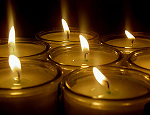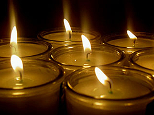Rav Yitzchak Friedman, the first Rebbe of Bohush (1834-1896). The eldest grandchild of the Ruzhiner, Reb Yitzchak was only a year younger than the Ruzhiner’s youngest son, Reb Mordechai Shraga, and was cared for and educated by the Ruzhiner himself, regarded more as one of the Ruzhiner’s children than as his grandchild. Reb Yitzchak’s father, Reb Shalom Yosef, was the eldest of the Ruzhiner’s six sons. Reb Yitzchak was only 16 years old when his father passed away. For a few years he lived in the town of Potik with his uncle Reb Dovid Moshe of Chortkov. Later on, Reb Yitzchak moved to the town of Ezemal and then finally to Bohush in Romania, becoming known as the Bohusher Rebbe.

 Rav Reuven Margulios (1889-1971). His published works range from biographies and history books to discussions of the behavior of Talmud sages, including behavior which is seemingly unusual, and explain it in light of those sages’ halachic opinions. It truly appears that there was no section of Shas or Midrash, no Rishon or Acharon, and no aspect of kabbalah which was not at Rav Margalios’s finger tips.
Rav Reuven Margulios (1889-1971). His published works range from biographies and history books to discussions of the behavior of Talmud sages, including behavior which is seemingly unusual, and explain it in light of those sages’ halachic opinions. It truly appears that there was no section of Shas or Midrash, no Rishon or Acharon, and no aspect of kabbalah which was not at Rav Margalios’s finger tips. Rav Dovid Sutton Dabbah (1885-1949). Born and raised in Aleppo, Syria, he married in 1910, and was asked to serve as the Rav of Killis, Turkey, near the Syrian border. He returned to Syria in 1916, but his wife died at the age of 25 one year later. He remarried in 1918, and left for Yerushalayim in 1924, as daily life for Jews in Syria became quite difficult. Settling in the Bucharim neighborhood, he studied at the Yeshiva Porat Yosef. Several years later, he traveled to Argentina, hoping to raise funds for the Jews of Yerushalayim.
Rav Dovid Sutton Dabbah (1885-1949). Born and raised in Aleppo, Syria, he married in 1910, and was asked to serve as the Rav of Killis, Turkey, near the Syrian border. He returned to Syria in 1916, but his wife died at the age of 25 one year later. He remarried in 1918, and left for Yerushalayim in 1924, as daily life for Jews in Syria became quite difficult. Settling in the Bucharim neighborhood, he studied at the Yeshiva Porat Yosef. Several years later, he traveled to Argentina, hoping to raise funds for the Jews of Yerushalayim.
Recent comments